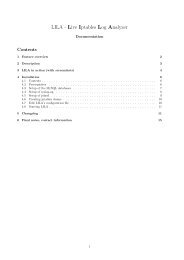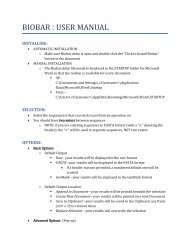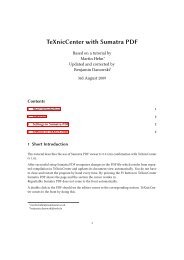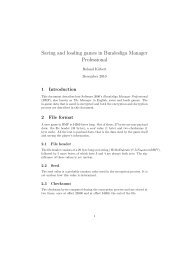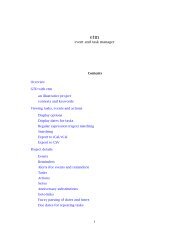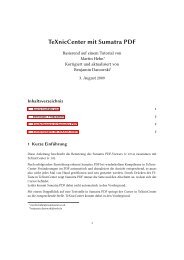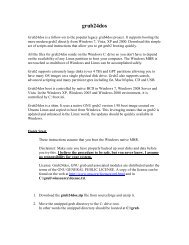Easy Java Websites (EJW)
Easy Java Websites (EJW)
Easy Java Websites (EJW)
You also want an ePaper? Increase the reach of your titles
YUMPU automatically turns print PDFs into web optimized ePapers that Google loves.
In both configuration free and configuration based requests, there can be defined a default<br />
request that performs certain actions when no request is found to handle a requestURI. The<br />
default request is simply named default and can be defined in the same way:<br />
webapp.Default.class<br />
for configuration free. And:<br />
<br />
for configuration based.<br />
Usually the default request handler will simply forward all requests to the website’s home page.<br />
Error Handling<br />
Error handling with configuration is handled with the following forwarding keys:<br />
authenticationError<br />
notSecureError<br />
validationError<br />
error<br />
And you simply handle them with forwarding/redirects. See Special Forward/Redirect<br />
Conditions above.<br />
For configuration free, any exceptions thrown back to the <strong>EJW</strong> servlet will be sent to /WEB-<br />
INF/error.jsp.<br />
An all situations, an exception that is thrown back to the <strong>EJW</strong> servlet will be available to page<br />
rendering in ${ejwException}, and a normalized error message will be available in $<br />
{errorMessage}.<br />
Security/User Authentication<br />
<strong>EJW</strong> security is all about restricting requests based on security roles. <strong>EJW</strong> has built-in support<br />
for both container-based and application-based security.<br />
If using container-based security, <strong>EJW</strong> automatically handles it and nothing further is required.<br />
<strong>EJW</strong> will use the getRemoteUser() and isUserInRole() methods defined in the ServletRequest<br />
class.





